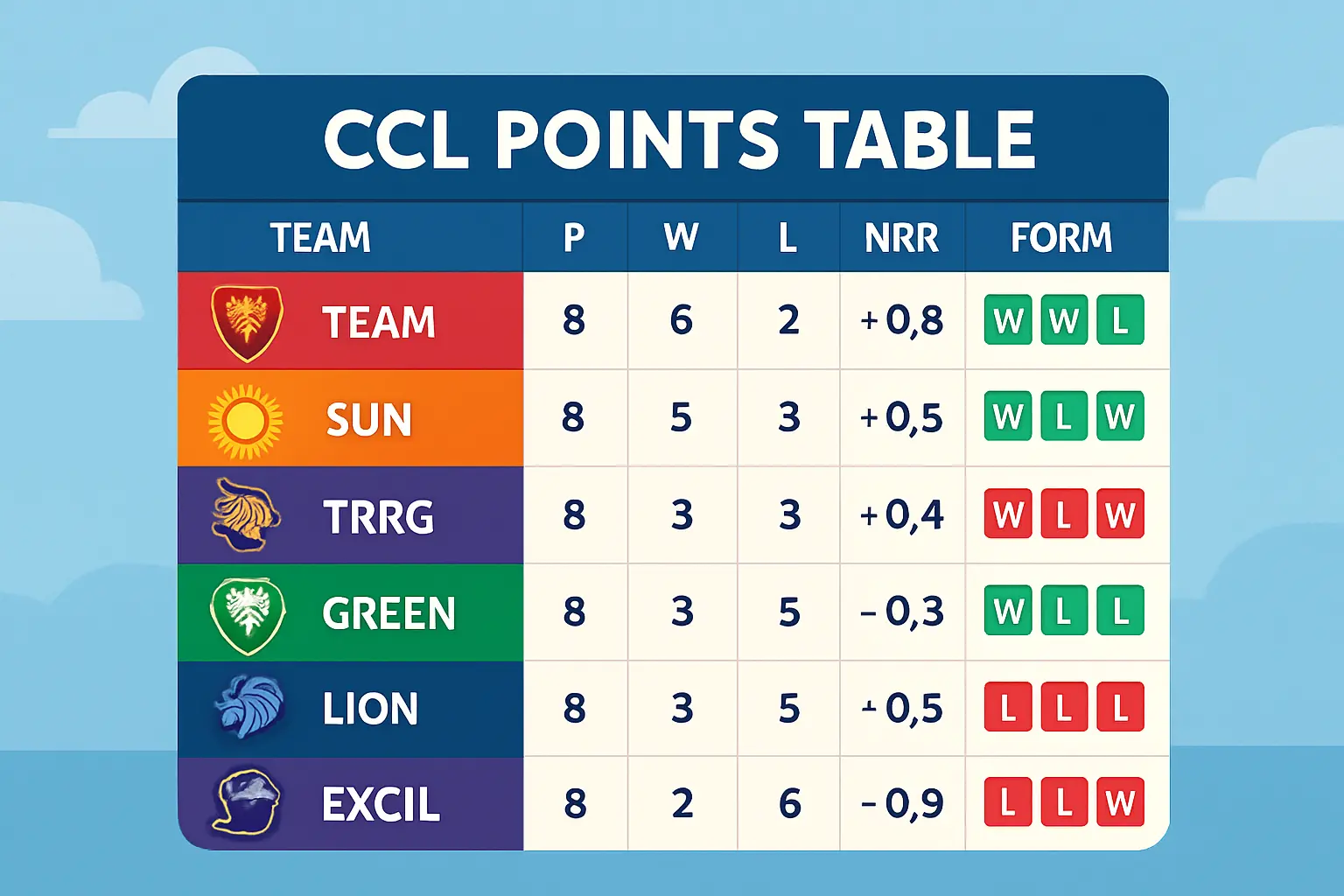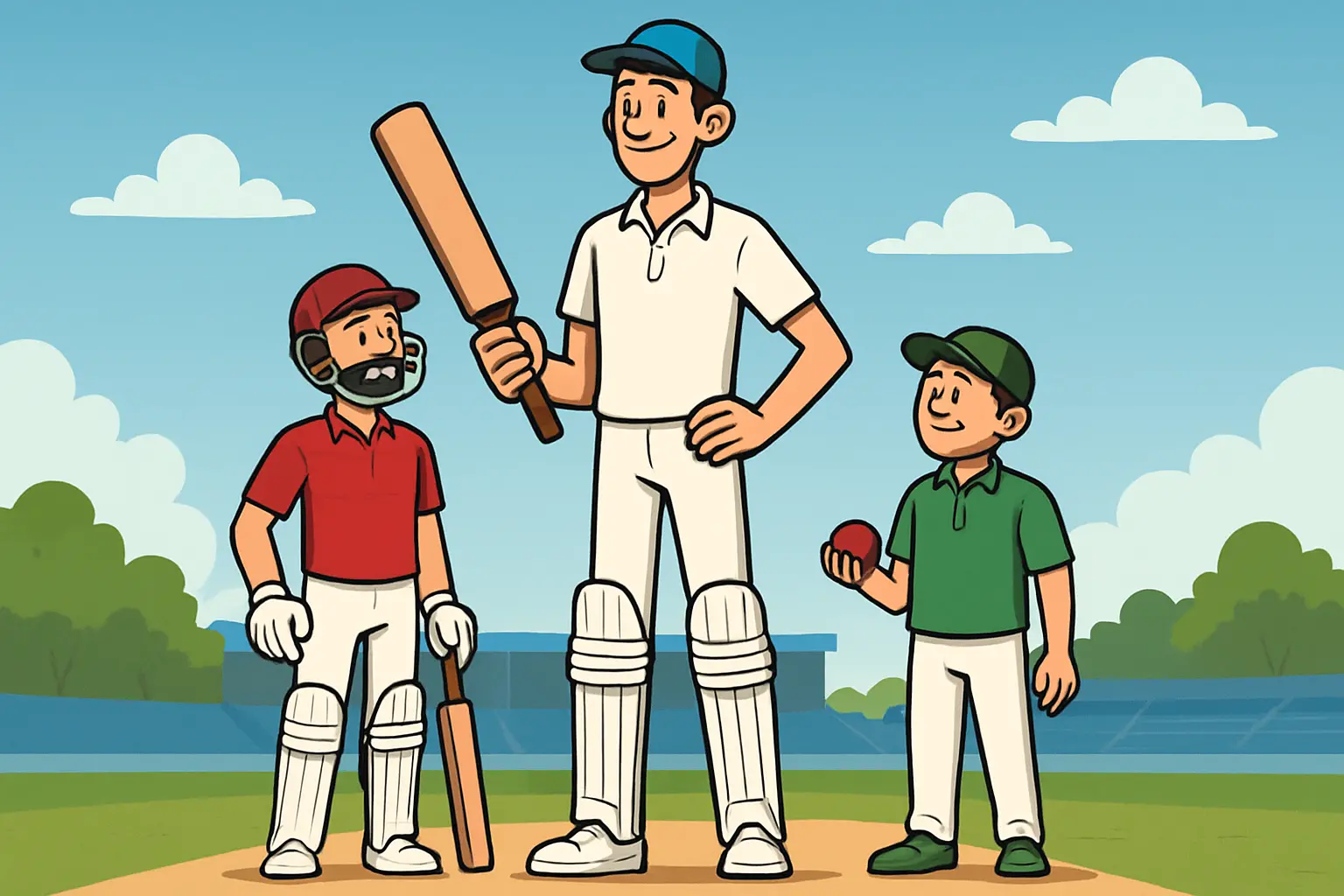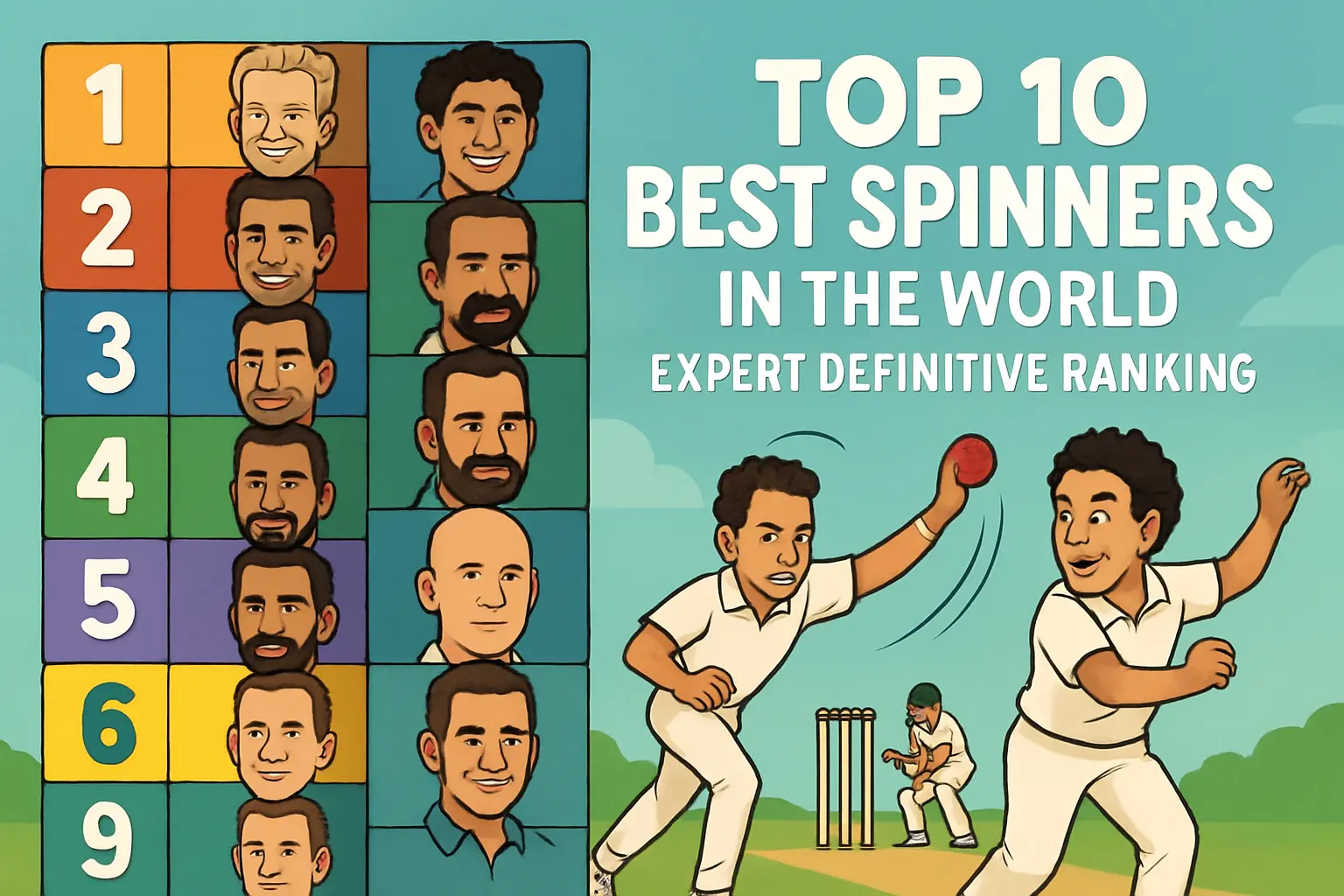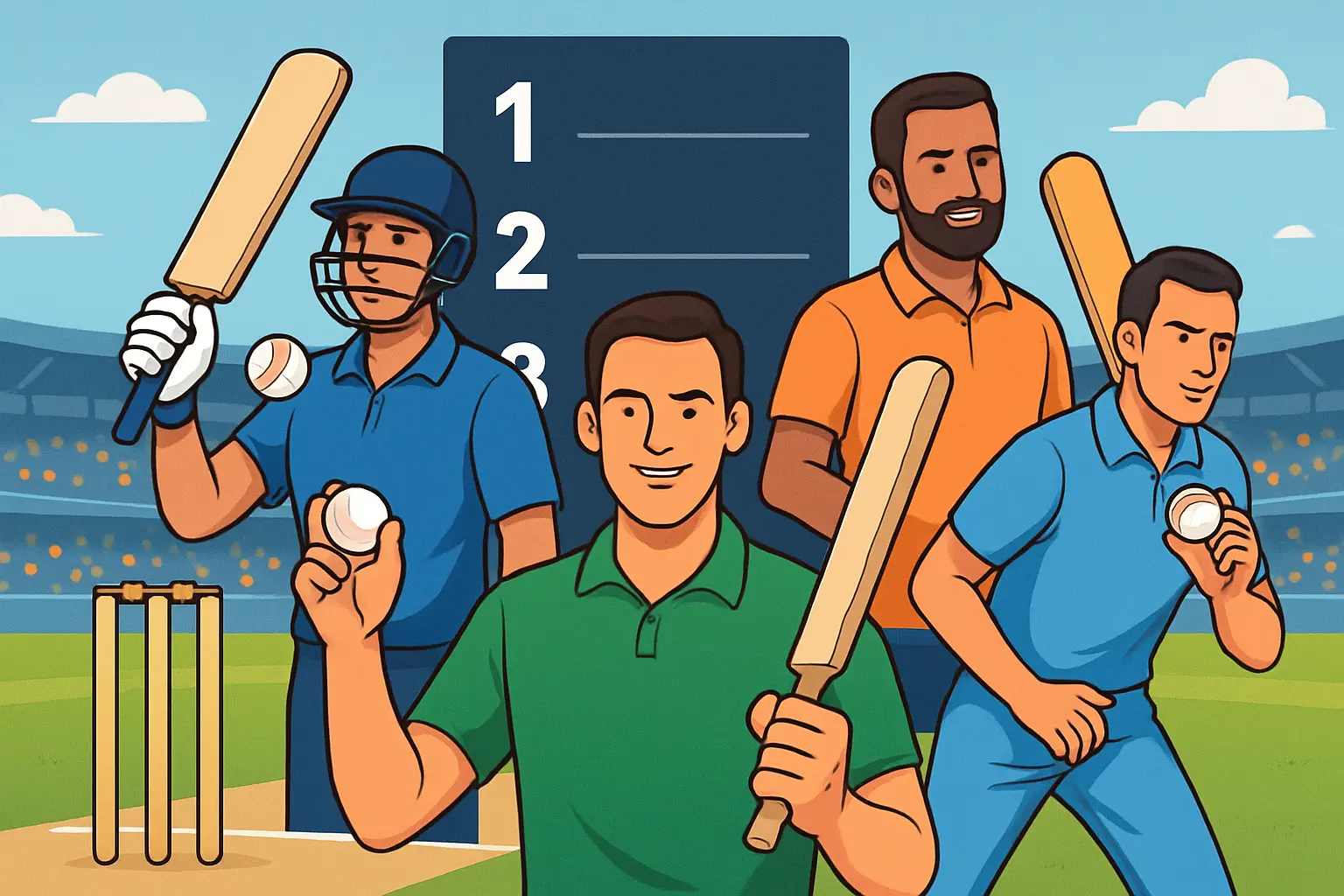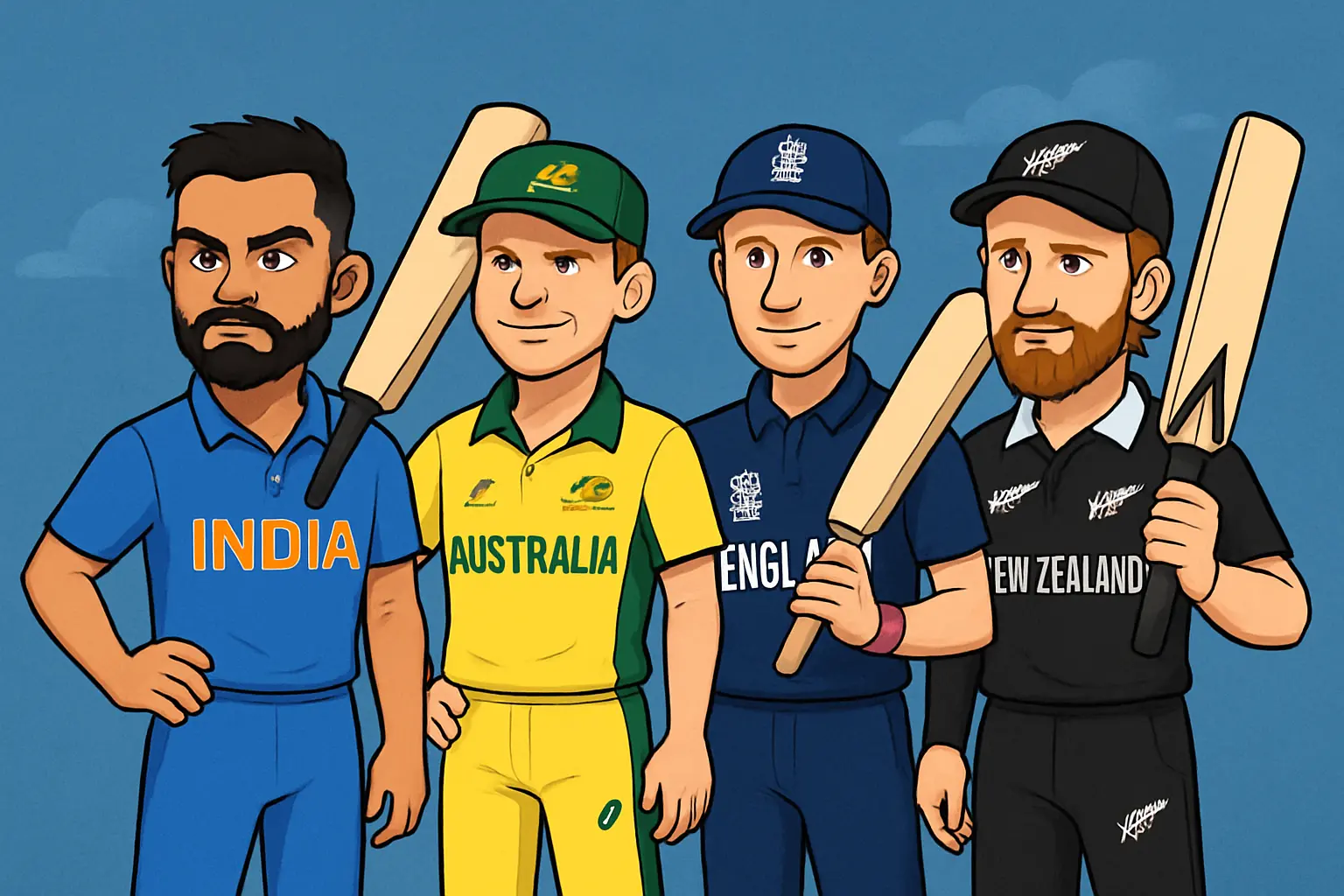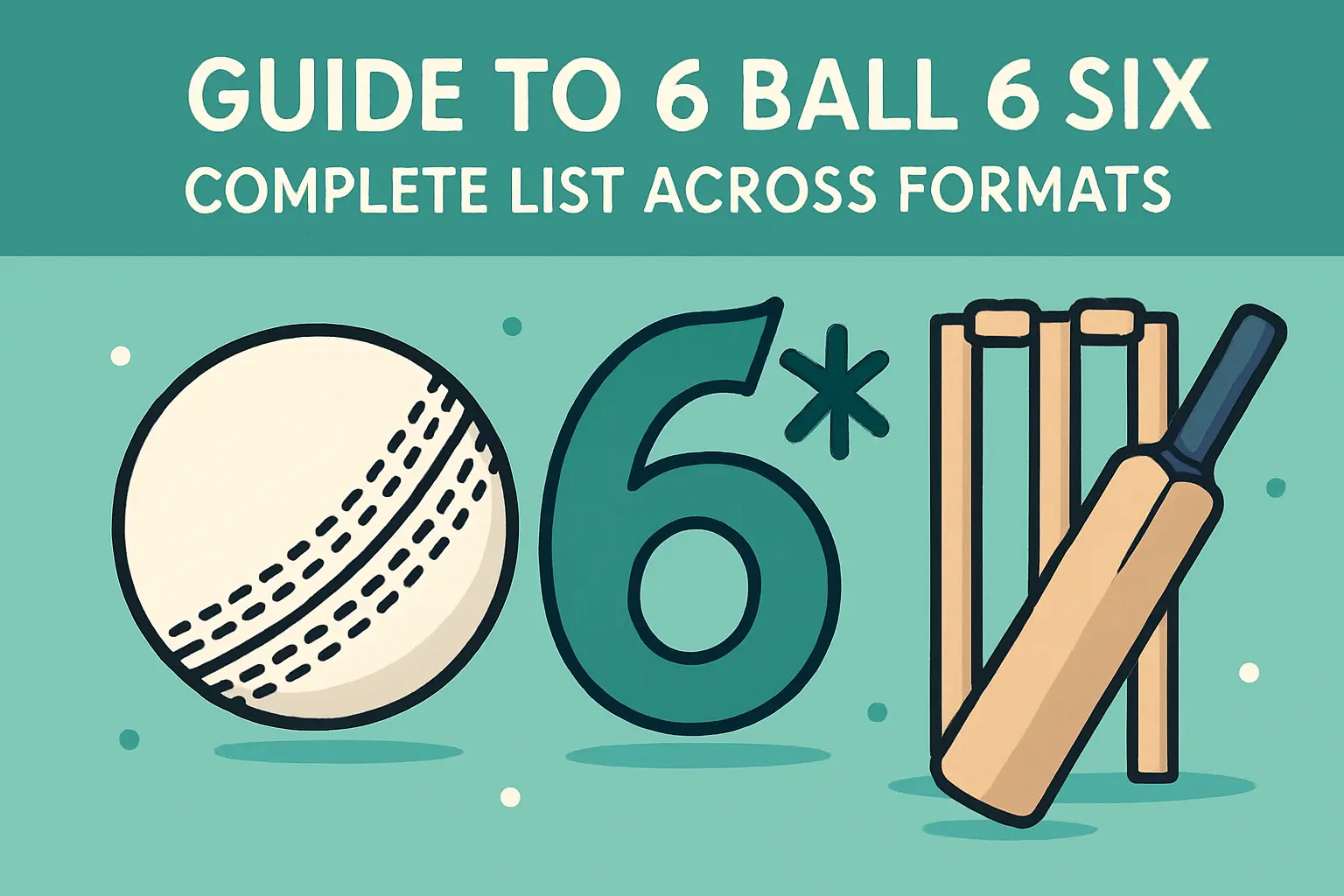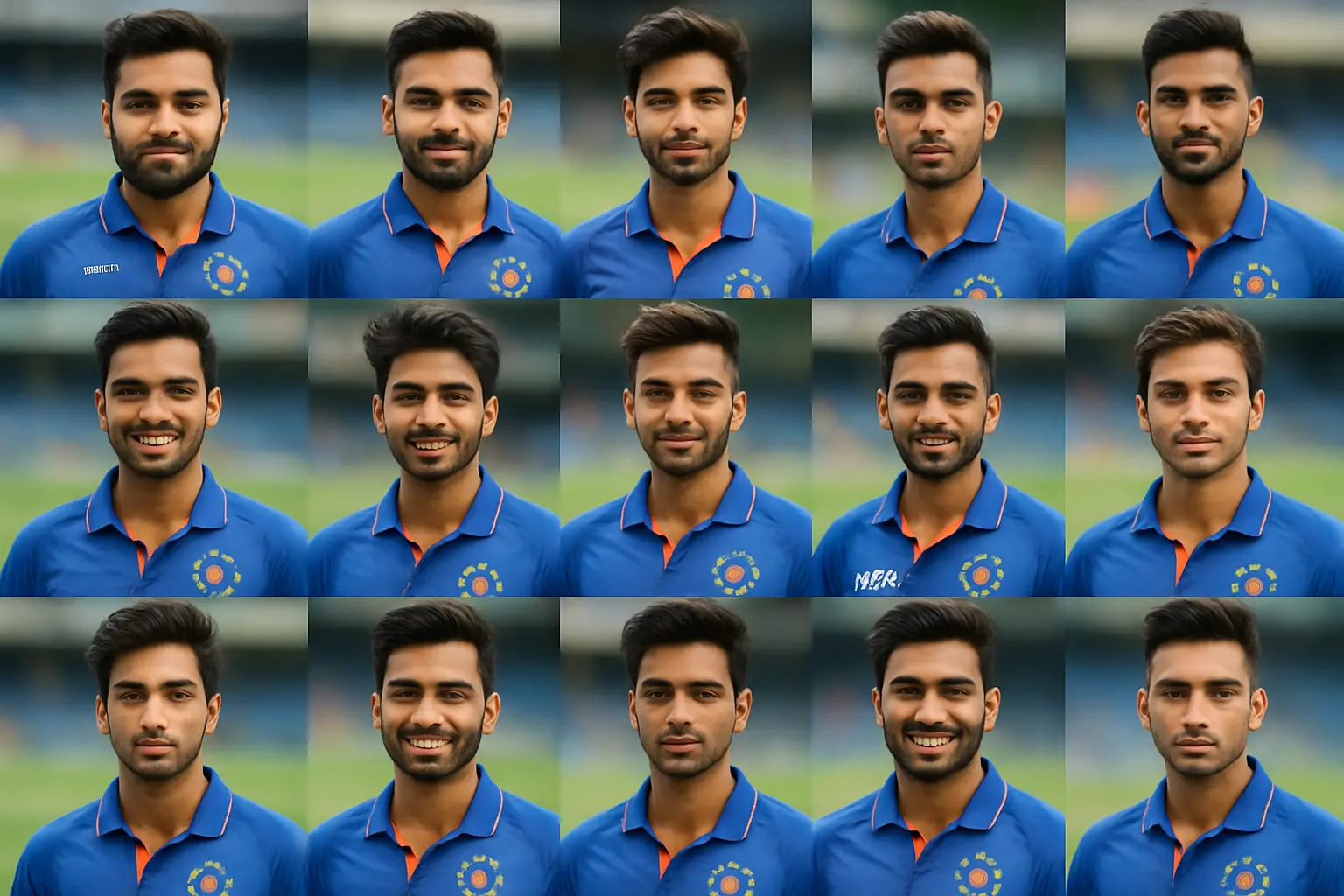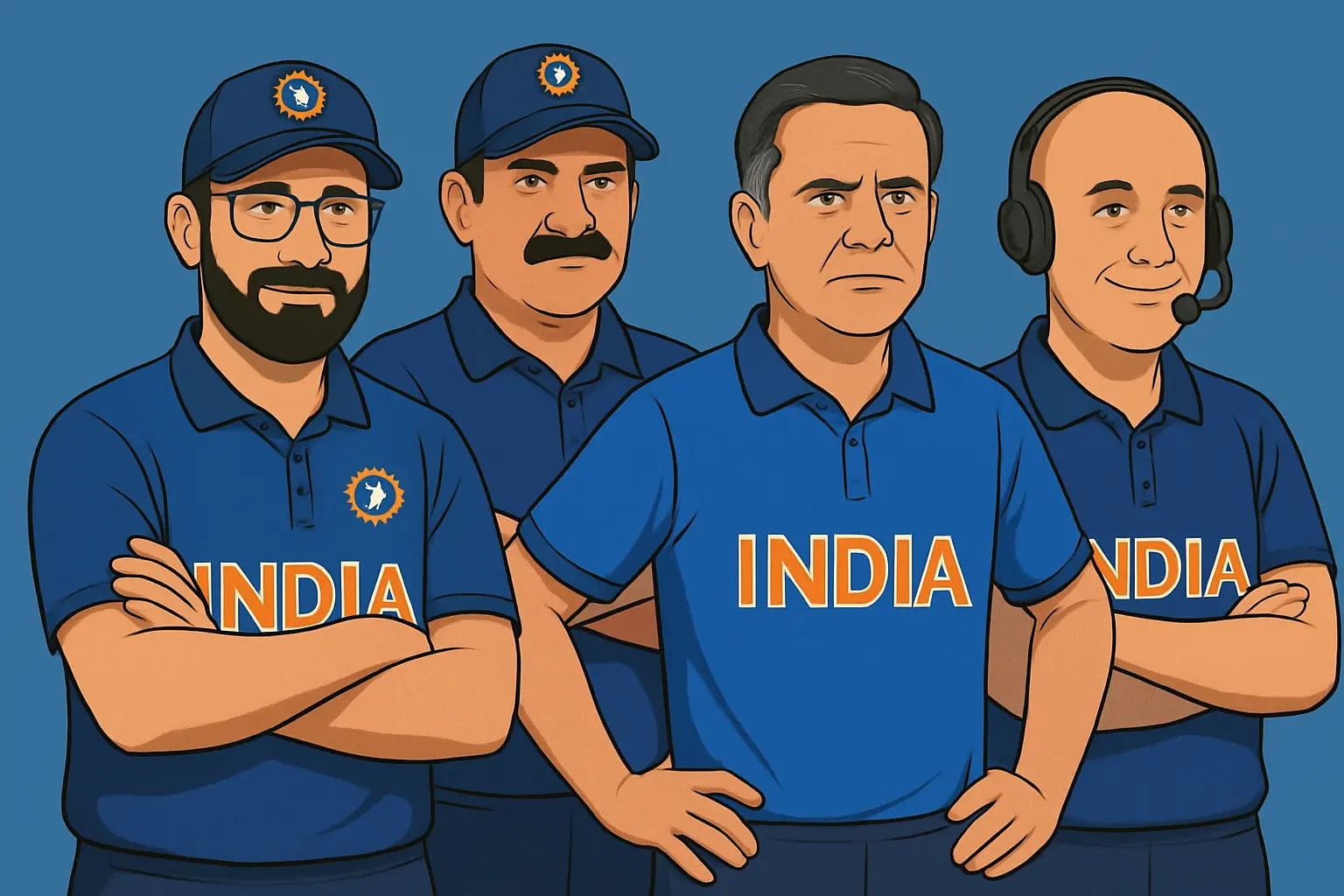A match can tilt with a fraction of a second and a blade of grass. A ball miscued to cover, a fielder charging, both hands soft and ready, hips low, eyes still, knees braced for the ricochet—then a clean gather, a single step, and a laser to the striker’s end. The set batsman looks stunned. The scoreboard doesn’t register a boundary saved or a dream snuffed out. It just shows a wicket. Fielding rarely gets the billboard; it gets moments—sharp, electric, unforgettable. And those moments, repeated with ruthless consistency, are what separate a good side from a champion side.
When people ask about the world best fielder, they usually expect one name. The truth is richer and more textured. Fielding is a family of arts—slip catching, close‑in reflexes, point and cover athleticism, boundary riding, relay throws, and direct hits under pressure. The best fielder in the world today is not always the one with the most catches. It’s the one whose decisions, technique, and nerve save the most runs and win the most moments when the spotlight burns hottest.
This is a data‑led, experience‑driven guide to the world’s best fielder in cricket: how to measure it, who tops the charts, how roles and formats shift the answer, and why legendary names still matter whenever you talk about the best fielders of all time.
How We Rank the Best Fielder in the World
Too many lists rely on vibes or a highlight reel. That produces fun conversations but shaky conclusions. To move beyond that, we use a transparent, role‑aware method:
- Catching efficiency relative to opportunity
- Expected catches (based on position, angle, speed, and ball trajectory) vs. actual catches.
- Drops at slip vs. drops on the rope are not equal in difficulty; we weight them by typical conversion rates.
- Run‑out impact and direct‑hit success
- Direct hits attempted vs. direct hits achieved.
- Throw speed, angle to stumps, release time, and whether the play was under scoreboard pressure.
- Positional difficulty and versatility
- Slip, short leg, silly point, point/cover, mid‑wicket, deep square, long‑off/long‑on—each has a different risk and exposure profile.
- Versatility across at least three positions adds value.
- Big‑match leverage
- Fielding impact in high‑leverage situations: World Cups, knockout matches, powerplays, death overs, tight fourth‑innings chases.
- Ground fielding and runs saved
- Clean pickups, angle to the ball, cutting off twos and threes, misfield percentage, prevention of boundary conversions.
- Durability and consistency
- Seasons sustained at elite level without slippage in standards.
- Ability to produce under fatigue and through format changes.
- Leadership and communication
- Orchestrating angles, calling for catches, covering teammates, and managing the ring and rope dynamically.
We synthesize these into a Fielding Impact Rating. It mixes quantitative indicators (catching efficiency, run‑out rates) with situational weighting (leverage) and positional difficulty. The number is internal; what matters is the rationale behind each ranking.
Who Is the No 1 Fielder in the World Right Now?
Ravindra Jadeja.
He is the rare cricketer who turns singles into run‑out chances and fours into twos purely by reading angles faster than batters. He makes direct hits look routine from point and mid‑wicket. He picks up to throw in one motion, with balance so perfect his arm never fights his feet. He attacks the ball without over‑running it. And he has the temperament to try the bold option on the last ball when a dot is not enough.
What separates Jadeja as the best fielder in the world today:
- Coverage: elite at point, cover, mid‑wicket, extra‑cover, and the boundary; he can close a gap you didn’t realize existed.
- Velocity of release: short backlift, wrists locked, seam upright, stumps targeted with a flat laser trajectory.
- Low error rate: very few misfields, even on damp turf; hand‑eye stays clean.
- Pressure appetite: thrives in white‑ball powerplays and death overs when a single mistake costs two more decisions down the line.
He is the modern gold standard for ground fielding and direct hits, and he catches in the ring with remarkable hands. Other contemporaries have standout attributes—Martin Guptill’s arm, Glenn Maxwell’s athletic range, David Warner’s relentlessness, Ben Stokes’s hands in the deep—but Jadeja wins across the greatest number of positions and game phases. If you ask a current international dressing room who they fear most when nudging a risky single into the circle, you will hear the same name more often than not.
The Best Fielders of All Time: A Ranked Core with Context
A single “all‑time” list always stirs debate because roles differ. But across eras, formats, and roles, these are the names that move matches. I’ve ranked them based on the method above, historical impact, and the breadth of their skill.
- Jonty Rhodes
- Archetype: point/cover panther; ring maestro; airborne stops and direct hits.
- Why here: redefined the athletic standard of fielding for a generation. Changed batting risk calculus at backward point. His horizontal run‑out in a World Cup became the sport’s most replayed fielding moment not for aesthetics alone, but because it was the clearest visual proof that fielding could be a match‑winning discipline.
- Signature: feet chopping like a sprinter, low hips, shoulder‑level throws, no delay between gather and release.
- Ravi(ndra) Jadeja
- Archetype: all‑format ring enforcer and direct‑hit specialist; extends to boundary roles.
- Why here: modern benchmark for run prevention; multi‑position excellence; peak fielding impact sustained across international and league play.
- AB de Villiers
- Archetype: universal fielder—slips, ring, rope; keeper when needed.
- Why here: the rare fielder equally devastating close to the bat and on the boundary. Softest hands at slip, yet also a demigod of the fence with backpedal judgment. Trained gymnast’s body control in the air.
- Ricky Ponting
- Archetype: leader at cover; direct‑hit assassin.
- Why here: insatiable hunger for a run‑out in big moments, fast feet into a balanced throw. Anchored one of cricket’s great fielding units and set coverage standards at cover and mid‑wicket.
- Mark Waugh
- Archetype: supreme slip at second; velvet hands.
- Why here: catching efficiency at slip that made edge chances feel inevitable wickets. Calm, delayed hands that let the ball arrive rather than snatching at it.
- Rahul Dravid
- Archetype: slip sentinel; record Test catcher among fielders.
- Why here: a clinic in late hands, soft wrists, and stable head. Occupied first and second slip with monk‑like focus over marathon sessions. Numbers and consistency lift him this high.
- Mahela Jayawardene
- Archetype: slip statesman; ODI catch record among fielders.
- Why here: reading angles off the bat for spinners and seamers alike, and commanding presence around the cordon. Anticipation made tough chances look simple.
- Faf du Plessis
- Archetype: ring general; rope acrobat; relay artist.
- Why here: high‑percentage diving takes plus rope intelligence—perfectly timed parries inside the boundary before momentum carries him over.
- Suresh Raina
- Archetype: ring and inner circle stopper; limited‑overs specialist.
- Why here: point and cover dynamo for his national side and in the IPL, incredible balance and technique at full speed. Elevated team fielding standards in a league era.
- Martin Guptill
- Archetype: boundary rider with a cannon; killer at long‑off/long‑on.
- Why here: release speed and arm strength among the best of the modern era. Conversions from the deep that look impossible unless you freeze‑frame the footing and load.
- Steven Smith
- Archetype: slip and short cover craftsman; late hands connoisseur.
- Why here: one of the safest slip catchers of the last decade, especially to the quicks. Soft hands and a natural sense of parallax for edges.
- Kieron Pollard
- Archetype: rope guardian; leap specialist; one‑hand catches expert.
- Why here: power and timing allowed him to play volleyball with the boundary padding, taking seemingly lost causes and turning them into two‑stage masterpieces. Vacuum hands.
- Andrew Symonds
- Archetype: mid‑wicket enforcer; heavy arm; big‑game presence.
- Why here: intimidation factor plus accuracy. Rare ability to change a chase with one direct hit or a dive that forced a set batter into a mistake two overs later.
- Paul Collingwood
- Archetype: point/cover artisan; reliable slipper to spin.
- Why here: technique‑driven and hyper‑coachable. Showed how repeatable fundamentals could build a world‑class fielding career in any conditions.
- Eknath Solkar
- Archetype: close‑in guardian; short leg specialist to spin.
- Why here: fearless reflex catcher inches from the bat, extracting wickets for spinners. Established the tactical value of a world‑class short leg at a time when helmet technology didn’t cushion courage.
Honorable mentions: David Warner, Glenn Maxwell, Ajinkya Rahane (slips), Ben Stokes, Herschelle Gibbs, Brendon McCullum, Trent Boult, Dwayne Bravo, Ravichandran Ashwin at short mid‑wicket to spin (anticipation), Joe Root (slips), Shoaib Malik (ring), Virat Kohli (deep and ring), Hardik Pandya (rope).
Best Fielder by Format
The formats ask different questions. Test cricket rewards patience at slip and short leg. ODIs weigh ring positioning and run‑out potential. T20Is prize rope judgment, relay technique, and sprint acceleration.
Best Fielder in Test Cricket
- Slip maestros: Rahul Dravid, Mark Waugh, Mahela Jayawardene, Steven Smith, Graeme Smith, Alastair Cook.
- Close‑in braves: Eknath Solkar, Ian Botham at gully, short leg artists who increased spinner effectiveness by raw nerve and fast hands.
- Why it matters: in Tests, a dropped slip chance can cost a hundred runs. Fielders must maintain concentration for days, in shifting light and slow sessions.
Best Fielder in ODI Cricket
- All‑format elites simplify ODI work because the phase‑based game rewards ring pressure and direct hits: Ricky Ponting at cover, Suresh Raina at point, Ravindra Jadeja across the inner ring.
- Boundary riders: Martin Guptill, Faf du Plessis, Kieron Pollard—rope management makes a six into a catch or a four into two.
- Slip roles are limited to early overs; the bulk of ODI fielding is ring and rope. The best ODI fielders combine a clean pickup with fast transfer and accurate throws to limit twos and steal a dismissal.
Best Fielder in T20 Cricket
- Death‑over rope specialists determine margins: Kieron Pollard, Faf du Plessis, Ben Stokes, Trent Boult, David Warner.
- Inner ring assassins in the powerplay: Ravindra Jadeja, Glenn Maxwell, Hardik Pandya. A stop inside the circle changes the next two balls.
- Why it matters: every saved run equals a dot ball in impact. A single parry on the rope often flips a target by six to ten runs across an innings via pressure.
Best Fielder in the World Cup
- Tournament legacy is built on clutch: Ricky Ponting’s direct hits, Jonty Rhodes’s signature run‑out, Martin Guptill’s long‑range kills, Jadeja’s knockout fielding clinics.
- Who owns the stage: in global tournaments, the fielders who dominate are the ones who keep decision‑making clear under noise and adrenaline. Ponting and Jadeja, specifically, have lit up knockout fields with immaculate decision trees.
League/Tournament Leaders
Best Fielder in IPL
- Historical leaders: Suresh Raina raised the league’s fielding ceiling early; AB de Villiers covered multiple roles; Kieron Pollard dominated the rope; Faf du Plessis made boundary catches a discipline. Virat Kohli has climbed to the top of the career catches list among fielders.
- Current standard: Ravindra Jadeja’s ring dominance, Glenn Maxwell’s multi‑position value, David Warner’s all‑phase consistency, and young Indian fielders like Shubman Gill and Riyan Parag lifting the norm.
- Power ranking lens: grade on catches converted under pressure, direct hits, and rope decision‑making when fatigued in humid night games.
Most Catches in IPL
The career list is topped by Virat Kohli among non‑keepers, followed by Suresh Raina, Kieron Pollard, Rohit Sharma, and AB de Villiers. The exact order in the middle has shifted with retirements and late‑career surges, but the leadership at the very top is clear.
Best Fielder in PSL / BBL / CPL / The Hundred
- BBL: Glenn Maxwell and David Warner set the ring and rope standard; Faf du Plessis, when involved, raises the rope IQ of any team.
- PSL: Faf du Plessis and Martin Guptill have shown their usual rope craft; local specialists such as Shadab Khan bring quick hands and smart angles at cover.
- CPL: Kieron Pollard’s rope dominance is legendary, Dwayne Bravo’s hands remain safe in hotspots, and young Caribbean athletes keep redefining standards in the deep.
- The Hundred: condensed format amplifies every saved run; Ben Stokes and Liam Livingstone excel under this pressure, with athletic rope plays and hard running between balls.
Role/Position Specialists: Who Is the Best, and Why
Best Slip Fielder in Cricket
- Shortlist: Mark Waugh, Rahul Dravid, Mahela Jayawardene, Steven Smith.
- Edge goes to Mark Waugh for a blend of elegance and efficient reach; Dravid has the volume crown in Tests. Smith is the finest modern slip to pace, with head‑still technique and a knack for late adjustments.
Best Close‑in Fielder
- Eknath Solkar: fearlessness and technique at short leg set a template. Short leg is an ecosystem of pre‑movement and blind trust in your bat pad reflexes; Solkar was a master.
Best Ground Fielder (Ring)
- Ravindra Jadeja: feet, hands, and brain in a single, fluid sequence. Shaves singles and turns throws into precision instruments.
Best Boundary Rider
- Kieron Pollard: a rope guardian like no other, combining height, timing, and awareness of momentum. Faf du Plessis is the all‑rounder’s version—supreme technique and catch‑parry control.
Best Direct‑Hit Fielders
- Ricky Ponting and Ravindra Jadeja lead this category. Martin Guptill and AB de Villiers are next tier. The direct hit is a decision as much as a skill—these players pick the moment to attempt it and nail it when it matters.
Best Fielders at Point / Cover / Mid‑wicket
- Point: Jonty Rhodes redefined the spot; Suresh Raina and Glenn Maxwell carried the tradition forward.
- Cover: Ricky Ponting for the complete set—anticipation, body position, and cannon arm.
- Mid‑wicket: Jadeja for run prevention and direct hits; Andrew Symonds for intimidation and accuracy.
Country‑by‑Country: Fielding DNA and Standout Names
Best Fielder in India
- Current: Ravindra Jadeja.
- All‑time spine: Rahul Dravid, Suresh Raina, Mohammad Kaif, Virat Kohli, Ajinkya Rahane (slip), Yuvraj Singh at point/cover in his prime. India’s fielding revolution accelerated with Raina and Kaif in the limited‑overs era; Jadeja sits atop that modern arc.
Best Australian Fielders
- Ricky Ponting, Mark Waugh, Andrew Symonds, David Warner, Steven Smith, Glenn Maxwell.
- Team note: Australia institutionalized fielding standards with relentless training—the rope drills, off‑the‑line footwork, and slip catching schools produced a conveyor belt of elite fielders.
Best South African Fielders
- Jonty Rhodes, AB de Villiers, Faf du Plessis, Herschelle Gibbs.
- Team note: South Africa’s identity has long included ruthless athleticism; their ring discipline and rope judgment are habit, not highlight hunting.
Best Fielders in Pakistan
- Mohammad Yousuf had calm hands in slips; Shoaib Malik patrolled the ring cleverly; newer generations include Shadab Khan with sharp angles and fast release. Pakistan’s white‑ball sides recently have also showcased hungry rope athletes.
Best English Fielders
- Paul Collingwood, Ben Stokes, Joe Root in slips, Eoin Morgan as a ring organizer, Jason Roy with pace to the ball, and Chris Jordan’s clean ground technique and throws.
- Team note: In the modern era, England emphasized white‑ball fielding drills that raised baseline standards across counties.
Best New Zealand Fielders
- Martin Guptill, Brendon McCullum, Trent Boult, Kane Williamson at gully, Daryl Mitchell and Devon Conway improving the mean. New Zealand’s rope skills are among the most disciplined anywhere.
Best Sri Lankan Fielders
- Mahela Jayawardene (slip), Roshan Mahanama (ring), Tillakaratne Dilshan (dilscoop inventor, but also a brilliant fielder), and newer multis like Dasun Shanaka and Charith Asalanka in the ring. Sri Lanka’s slip catching tradition is deeply respected.
Which Team Has the Best Fielders?
At their peaks, South Africa and Australia have owned the global benchmark. New Zealand’s rope IQ is exceptional and consistently efficient. India’s modern white‑ball sides, driven by Jadeja and a younger generation of athletes, now rank with the very best units. If you’re asking about the complete fielding ecosystem—ring, slips, rope, communication—Australia and South Africa remain the standard historical templates, with India and New Zealand in the contemporary elite.
Records and Reference: Fielding Milestones Every Fan Should Know
A few bedrock numbers anchor any debate, and they help separate memory from mythology.
Most Catches by a Fielder (Non‑Keeper)
- Test cricket: Rahul Dravid holds the record for most catches.
- ODI cricket: Mahela Jayawardene holds the record for most catches.
- T20I cricket: David Miller is the record holder among fielders.
IPL Fielding Benchmarks
- Most career catches among fielders: Virat Kohli sits at the top of the all‑time chart, with Suresh Raina and Kieron Pollard next in line historically.
- Rope legends: Kieron Pollard and Faf du Plessis have defined match‑winning catches at the boundary; AB de Villiers contributed across slips, ring, and deep—rare versatility in a high‑variance format.
Fielding Impact You Don’t See on Basic Scorecards
- Two saved on the rope that force a batter onto strike against the wrong matchup next over.
- A throw that misses by inches but delays the batters’ running game for six overs.
- A clean gather at mid‑wicket that scares the set batter from turning ones into twos—pressure that never shows as a stat, but shifts the chase by six to eight runs.
Technique, Drills, and the Craft Behind Greatness
Best fielders are built, then revealed. What you see as “instinct” is trained pattern recognition.
Core Fundamentals
- Eyes still, head quiet: moving into the ball with a stable head keeps hands independent and soft.
- Feet before hands: get your hips and feet aligned to the throw target; the hands will follow. Throwing across your body bleeds accuracy.
- Positioning by batter and pitch: fielders adjust for backlift height, bat face angle, and pitch pace. A batter opening the face at point? Shift a meter to cut the reverse angle.
Best Fielding Drills for Cricket
- One‑hand pickups into stumps: simulate off‑balance pickups with a coach rolling at different paces. Emphasize quick transfer and low, flat throws.
- Triangle relay drill: three fielders, rope boundary, and a coach hitting to create relay parry and throw choices under time pressure.
- Reaction pops for slips: coach stands ten meters away with a deflection board. Vary height, speed, and angle late. Focus on late hands and fingers up.
- Point reflex grid: balls fed at knee height with slight deviations; fielder squares up, takes a single step, and gathers with one motion to a target stump.
How to Improve Catching in Cricket
- Practice at match pace: train at the speed of the game, not gentle lobs. Your brain must learn the exact window for decision and deceleration of hands on impact.
- High‑low sequences: alternate overhead high balls with waist‑high rockets; learn to reset head and hip position immediately after the catch to avoid overbalancing.
- Breath timing: exhale on impact to keep hands relaxed. Gripping or holding your breath shortens your reach and tightens your fingers.
Direct Hit Techniques in Cricket
- The three steps: gather low with eyes level, step through the throw line with your hip leading, release with elbow high and wrist firm so the seam stays upright.
- Choose the stump: front‑on throw if the batter is short of ground; side‑on if you’re tight to the angle. Great fielders don’t always aim center peg; they pick the visible stump.
Slip Reaction Time Drills
- Variability is king: mix edge pace and angle using a thin edge bat or a ramp. Always finish with ten catches off genuine distance to mimic session fatigue.
- Pair work: two slip fielders practice calling and crossing to build communication rhythm; many drops happen not because of hands, but because two fielders locked eyes for a fraction too long.
Fielding Positions Explained, the Expert Way
- Point: you’re a thief of singles and a creator of doubts. Start half a step deeper to rocket balls; step up when spinners bowl to cut the dab.
- Cover: shoulder of the ring. Own the angle to long‑off. Fakes matter: a half‑step forward after release reduces twos.
- Mid‑wicket: becomes a wicket position to wristy batters; be on your heels for flicks, then roll through the ball into the throw.
- Long‑off/Long‑on: the outfield CEO. Read the ball off the bat, not the crowd noise. For high catches, set feet early; for rope parries, know your step count to the cushion.
Case Studies: Three Plays That Define Fielding Greatness
Jonty Rhodes at point
The frame: batter scrambling for a desperate single, ball nudged square, Rhodes breaks in a straight line, keeps the ball in front of his eyes, dives through the pick‑up, and gathers into a single airborne motion. The run‑out isn’t about speed alone; it’s about melting pick‑up time to zero.
Ricky Ponting’s direct hit from cover
The frame: soft hands on gather, downhill body momentum in the throw, and a release point early enough to beat a diving stretch by inches. The genius is in the decision: he only fires when the batter’s turn is a hair late. Ponting’s fielding brain is as sharp as his hands.
Ravindra Jadeja’s one‑motion bullets
The frame: a firm push to mid‑wicket, Jadeja sprints ten meters, arrives low and balanced, left foot plants, the right shoulder whips through, and the ball carries stump‑high from twenty‑five yards with no arc. The batter knows he’s gone halfway into the run.
Best Fielder in the World Right Now vs. Best of All Time
- Right now: Ravindra Jadeja owns the crown for total influence per match across formats and positions. Glenn Maxwell, Martin Guptill, David Warner, and Ben Stokes round out the very top contemporary cohort.
- All time: Jonty Rhodes remains the emblem of transformative fielding. Slip deities like Rahul Dravid and Mark Waugh define catching consistency. AB de Villiers and Ricky Ponting combine athleticism with decision‑making clarity that wins finals.
Format‑Specific Top Tiers Today
Best Fielder in Test Cricket (current landscape)
- Slips: Steven Smith, Joe Root, Ajinkya Rahane when in the XI, Kane Williamson at gully.
- Ring/close‑in: short leg specialists are more rotational now, but the best teams invest in consistent close‑in training blocks before spin‑friendly tours.
Best Fielder in ODI Cricket (current landscape)
- Ring dominators: Ravindra Jadeja, Glenn Maxwell.
- Rope surgeons: Martin Guptill, David Warner, Ben Stokes, Trent Boult (clean high‑ball technique and parries).
Best Fielder in T20 Cricket (current landscape)
- Rope dominance: Kieron Pollard’s prime set the template; now Faf du Plessis, Tim David, and several athletic all‑rounders carry the dark arts of the boundary.
- Inner ring: rapid hands and fast releases rule—Jadeja, Maxwell.
IPL Best Fielders: All‑Time and Current
- All‑time pantheon: Suresh Raina, AB de Villiers, Kieron Pollard, Faf du Plessis, Ravindra Jadeja, and Virat Kohli as the career catches leader.
- Current headliners: Jadeja, Maxwell, Warner, Shubman Gill, Ravichandran Ashwin’s subtle ring work against spin, Hardik Pandya on the rope.
A Compact, No‑Fluff Records Table
Key Fielding Records (Non‑Keepers)
- Test cricket, most catches: Rahul Dravid
- ODI cricket, most catches: Mahela Jayawardene
- T20I cricket, most catches: David Miller
- IPL, most career catches: Virat Kohli
Note: These are career benchmarks among fielders, not wicketkeepers. They are stable anchor points for any debate on the best fielder in cricket.
What Elite Fielders Know That Others Don’t
- Ball flight tells the tale: spin, seam wobble, and wind shift the ball late; pros run on the line of the ball as if it were a corridor, not a dot. They adjust mid‑run without losing balance.
- The best hand is the quiet hand: great fielders don’t stab; they let the ball land into their fingers as the hands retract slightly on impact—this absorbs pace and minimizes ricochet.
- Angle is currency: cutting angles to the ball saves energy, not just runs. Elite fielders compute the batter’s next decision even before they collect—the throw not taken can be the smartest play.
- Stump sightlines: direct hitters don’t aim at the middle of three sticks; they pick the front or back stump based on their approach to widen the visual channel.
- They train chaos: not perfect tosses to the hands, but deflections, bad bounces, pick‑ups on uneven turf. That’s why their technique holds when the ball misbehaves.
Tactical Breakdowns That Win Matches
- Powerplay ring compression: five inside the circle bend into a shallow arc toward point or square leg based on where the batter’s bottom hand is pointing. Done right, it saves twelve to fifteen runs without a single highlight.
- Rope guard plus relay partner: the best sides always pair a rope guardian with a relay fielder positioned fifteen meters in. This turns a sure four into two—and cuts off desperation threes.
- Spinner’s slip puzzle: world‑class cordons place a catching mid‑wicket with a straight short mid‑on to intercept hard hands against the spin. This brings bat‑pad into play and channels mishits to predicated zones.
Fielders Who Redefined Hotspots
- Point as a wicket position: Jonty Rhodes. Since then, teams recruit athletes specifically for this role, not merely shunting a batter there for convenience.
- Cover as a run‑out machine: Ricky Ponting. Many modern run‑outs from cover mimic his momentum‑through‑release template.
- Boundary as an art, not a chore: Kieron Pollard and Faf du Plessis showed you can plan for parries as deliberately as a slip plans for an edge.
- Slip as a lab: Mark Waugh and Rahul Dravid turned repetition and late hands into a system; Steven Smith modernized it with obsessive micro‑adjustments to each bowler’s angle.
Best Fielders Right Now: Snapshot Power Ranking
- Ravindra Jadeja: current no 1 fielder in the world for combined ring control, direct hits, and versatility.
- Glenn Maxwell: game‑changer both inside the ring and on the rope.
- Martin Guptill: rope + arm; high‑game‑IQ positioning.
- David Warner: relentless, safe, and technically sound at all phases.
- Ben Stokes: big‑moment catches, especially at long‑on/long‑off.
- Faf du Plessis: rope acrobatics and relay mastery; still an influence in leagues.
- Tim David: emergent rope specialist with strong parry technique.
The Psychology of Fielding: Why Some Players Never Miss
- Clarity under noise: great fielders make an early binary decision—commit or hold—and don’t wobble. Hesitation kills feet and hands.
- Obsession with repetition: top fielders add volume without burning out. Their drill design rotates surfaces, speeds, and angles, embedding adaptability.
- Competitive humility: fielders who dominate enjoy the anonymous wins—saving twos, backing up throws, trimming overthrows. They feed on the craft more than the applause.
Frequently Asked Questions
Who is the best fielder in the world?
Ravindra Jadeja is the best fielder in the world right now for total impact across positions and formats. He dominates the ring, hits the stumps, and makes difficult catches look straightforward.
Who is no 1 fielder in the world?
For the current era, Jadeja. Across all time, Jonty Rhodes remains the sport’s fielding icon and the reference point for how a fielder can define a series.
Who is the king of fielding?
Jonty Rhodes holds that cultural title for transforming how teams thought about point and cover; he made fielding a weapon, not a chore.
Who has the most catches in cricket by a fielder?
- Test cricket: Rahul Dravid.
- ODI cricket: Mahela Jayawardene.
- T20I cricket: David Miller (among fielders).
Who is the best slip fielder of all time?
Mark Waugh for pure hands and elegance; Rahul Dravid for unmatched volume and serenity under pressure. Steven Smith is the modern master to pace.
Is Ravindra Jadeja the best fielder?
Yes, in the contemporary game. His run‑out threat and run‑saving consistency at multiple positions put him at the top.
Best fielders right now vs all time?
- Right now: Jadeja, Maxwell, Guptill, Warner, Stokes.
- All time: Jonty Rhodes, AB de Villiers, Ricky Ponting, Mark Waugh, Rahul Dravid, Mahela Jayawardene, plus modern greats like Jadeja who bridge the lists.
Best fielder in India currently?
Ravindra Jadeja.
Best fielder in IPL history?
Suresh Raina set the early standard, AB de Villiers and Kieron Pollard added era‑defining highlights, and Virat Kohli leads for career catches among fielders. Jadeja is the most impactful all‑phase fielder across seasons.
Why Lists Miss the Point—and How to Watch Like a Pro
Great fielding is not a YouTube montage; it is a pattern of control over the space between bat and boundary. When you watch the next match, look for:
- The half‑step at point that steals a single before it exists.
- The relay partner already in motion when the ball is airborne to the rope.
- The slip fielder’s hands waiting, not reaching, so the edge nestles rather than smashes.
- The throw aimed not at stumps, but at the base of the visible peg for the angle.
If you track those micro‑events, you will see why certain names always sit at the top of any best fielder in the world argument.
Selected Player Spotlights
Jonty Rhodes
The movement vocabulary of a gymnast, applied to cricket. Low center of gravity, hands presented early, elbows tucked until the last moment. Fielded as if he could pause time at the gather.
Ravindra Jadeja
His competitive advantage is sequencing. He aligns feet, hips, and shoulders so quickly that the ball and throw almost fuse. He also sells the run to batters: he invites the push, arrives early, and punishes the misread.
AB de Villiers
Owns one of the best first steps in cricket, especially on cross‑batted strokes. He can flip from receiver to attacker instantly, whether in slips or on the rope, because he never drifts; he anchors his feet before the ball arrives.
Ricky Ponting
Ferocious without being reckless. His accuracy across distances is the memory, but his footwork to the ball—always arriving balanced, with a low stance and a clear throwing lane—is what produced that accuracy.
Mark Waugh
The poet at second slip. Shoulders level, hands soft, wrists elastic. He judged late movement better than most, catching on the line of the ball rather than lunging at where he hoped it would be.
Kieron Pollard
Rope geometry in human form. He tracked his step count to the cushion, leapt on the beat, and executed mid‑air parries as if choreographed. Strength and timing made it look straightforward; it was anything but.
Building a Fielding‑First Team Culture
- Appoint a fielding captain: not the team captain, but a senior fielder who calls angles and choreographs ring and rope mid‑over.
- Metrics that matter: track not just catches and run‑outs, but saved runs, two‑to‑one conversions prevented, and misfield percentage per position.
- Reward anonymous plays: create team awards for the defensive series—most hustles, best backing up, best relay—even when no wicket falls.
Why the Best Fielders Make Everyone Else Better
- Bowlers bowl braver lengths when they trust their slips; spinners attack more when short leg and silly point feel inevitable, not optional.
- Batters in the opposition run less, tire more, and lose rhythm when every nudge is a maybe, not a given.
- Captains set more aggressive fields because the fielders convert half‑chances into wickets.
Closing Thoughts: The Quiet Empire of Fielding
Cricket’s greatest theatre often lives in the invisible margins. The scoreboard credits bowlers for wickets and batters for runs. Fielders occupy the space between those certainties, stealing, shaping, and escalating outcomes. This is where the world best fielder lives—inside inches, inside choices, inside the heartbeat before a throw leaves the hand.
If you’re searching for one name today, pick Ravindra Jadeja. For a timeless icon, say Jonty Rhodes. When you speak about slips, say Mark Waugh and Rahul Dravid with the reverence they earned. Add AB de Villiers and Ricky Ponting when you talk about complete fielding portfolios. And when you argue with friends about the best fielder in the world, remember that this isn’t a beauty contest of dives; it’s a hard business of repeatable skill under fire, of angles and decisions that turn games.
The greatest tribute to an elite fielder is not a highlight reel. It’s the quiet over in which the opposition simply stops trying things that once felt easy. That’s power. That’s legacy. That’s the art.


